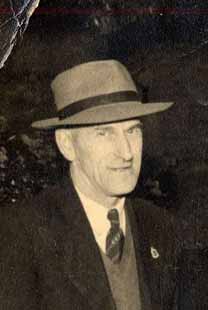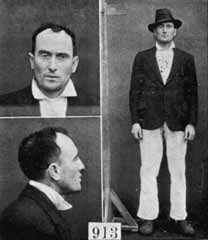themes
themes
Page 2
1 | 2 | 3
Child Migration
Motivations behind the South Australian government’s scheme to recruit British boys for its farm apprenticeship programme were basically twofold: on the Australian side, it was a key component of the government’s strategy to boost the state’s rural population, with long-term settlement of the young migrants in their country being their ultimate goal. On the British side, there were aspirations on the part of Thomas Sedgwick, a civil servant who led a committee comprised of managers of boys’ clubs and other social workers, and managers of lads’ clubs themselves, to break the cycle of “blind alley” (dead end) occupations and unemployment. They aimed to achieve this by gaining long term employment for their charges on colonial farms.1
Initially reluctant to accept ex-reformatory boys due to fears that they were incapable of reform, the South Australian government was reassured that they would become ‘good and useful citizens’.2 Kibble supplied most of the ex-reformatory boys to the scheme, sending seventeen boys in three different groups between October 1913 and July 1914. It appears that Kibble’s governor, Mr James Love, tried to provide some of his most promising pupils to the emigration scheme: George McPhail and James Pettigrew were successive school captains; Alexander Simpson had been Secretary to the School Council for three years; the other boys also had good reports. It also seems that Mr Love was attempting to provide these boys with the best opportunities available when they were discharged from Kibble, as some of them had no homes to return to or, as ex-reformatory boys, may have faced prejudice in their local communities. Emigration could have offered them a fresh start.
Their fortunes in Australia were mixed, with some moving on from their initial placements to other employers and industries. In 1915 and early 1916, sixteen of the boys enlisted in Australian Imperial Force (AIF), while one remained on the home front in Australia with the 74th Battalion of Australian Military Forces. Six of the boys died in WWI, in 1917-18, and were buried in Scotland, England and France.3 In a very poignant case, Alexander Simpson died thirty minutes after Armistice Day (11th November 1918) ended and was consequently afforded a full military funeral near the Australians' Monte Video Camp in Weymouth, England.4 The surviving boys were repatriated to South Australia when the war ended, with the exception of William Arthur who was one of very few AIF soldiers discharged in London. It is not clear why he was granted this privilege but he intended to return to Glasgow.5
One of the original seventeen boys, Hugh Lawson, had a more chequered life than some of the others, deserting in 1915 then enlisting again under the name of Robert Taylor (the name of one of the other Kibble boys). He deserted again before re-enlisting as Lewis Grant (Elspeth’s great grandfather’s name), which he adopted as his pseudonym for the rest of his life. Numerous convictions and prison sentences, linked to alcoholism, followed during the 1920s-1950s.
The real Robert Taylor also used aliases and followed a life of more petty crime. He eventually settled in Adelaide, where he was repeatedly arrested for begging, drunkenness and generally being a ‘rogue and a vagabond’. Three other boys became known criminal offenders, one of whom died in Melbourne in 1932 and another who was a resident of the Northfield Mental Hospital when he died in 1959.
Although none of the boys became farmers after the war, three to four of them settled in South Australia, married and raised families. George McPhail’s grandson, Graeme Parsons, visited Kibble with his wife and son in October 2008 while on a trip from Australia to the UK. Like Lewis Grant, George had never told his family about his association with Kibble and they only discovered this through Elspeth Grant’s research and Kibble’s Lasting Legacy project. Graeme and his family enjoyed their visit to the school and the opportunity to see George’s original records and view the locations where George would have lived and worked almost a century ago. George joined the Australian Infantry and fought in the trenches during the First World War. He made his only visit to Glasgow in 1917 while on leave, to visit his mother Lizzie McPhail and his four sisters. On his return to Australia he worked with engineering and agricultural businesses. He later developed a plan to turn South Australia into a centre of a heavy chemical industry based on local salt supplies. It is particularly touching in this Homecoming Scotland year that George’s daughter, Judith now aged eighty-two, has travelled from her home in Australia along with her son Graeme and his wife and her grandson Kieran to attend Kibble’s 150th anniversary events. Kibble is delighted to welcome three generations of George’s descendants to join in our celebrations.
1Grant, E., “Opportunity for Boys to Become Farmers”: The South Australian Government’s Scheme for the Emigration of British Lads, 1913-14, Unpublished undergraduate dissertation, University of Adelaide, Oct. 2007, p.21
2State Records of South Australia, GRG7/53, ‘Letters received by Immigration Department from the Agent-General, London, 1911-15, 12 December 1913 report, cited in Grant, E., 2007, p.32
3Grant, E., “Opportunity for Boys to Become Farmers”: The South Australian Government’s Scheme for the Emigration of British Lads, 1913-14, Unpublished undergraduate dissertation, University of Adelaide, Oct. 2007, p.40
4National Archives of Australia (NAA), B2455, Simpson, cited in Grant, E., 2007, p.40
5NAA, B2455, Arthur; and Clement Lloyd and Jacqueline Rees, The Last Shilling: A History of Repatriation in Australia, Melbourne UP, Carlton, 1994, p.119, cited in Grant, E., 2007, p. 40
6Police Gazette, 1928, p.291; 1934, pp.96, 101, 187, 200, 286; 1935, p. 189; 1938, p. 420; 1939, pp. 217, 324; 1941, p. 332; 1942, photo supplement (no. 1852), pp. 54, 246, 257, 271-2, 309, 364; 1943, pp. 7, 27, 169, 291; 1944, pp. 15, 40, 79, 105, 322, 349, 403, cited in Grant, E., 2007, p. 43

